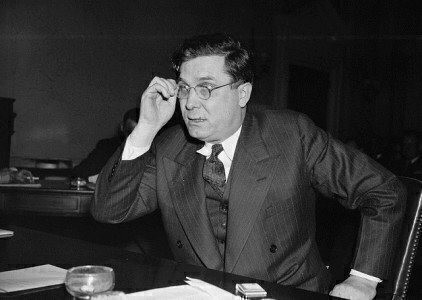In the past week, candidates Bernie Sanders, Carly Fiorina and Ben Carson announced White House bids. For Sanders, he is taking on former Secretary of State Hillary Clinton in the Democratic race, while Fiorina and Carson enter a crowded Republican field.

Consensus poll numbers from Real Clear Politics show Clinton with a 56-point lead over Sanders in national polls. Carson is eighth in current consensus polling among GOP candidates, while Fiorina is in 13th place.
The Constitution lays out the basic framework of who can run for office and how the Electoral College handles results. Beyond that, anyone in theory is qualified for office, as long as you are a 35-year-old natural citizen who has lived at least 14 years as a U.S. resident – unless, of course, if you aren’t a former President who has served at least six years in office.
In recent years, candidates who were off the radar in national campaigns included Jimmy Carter in 1976 and Bill Clinton in 1992. Carter’s own home-state newspaper, the Atlanta Journal-Constitution, poked fun at his candidacy with a headline that read, “Jimmy Who Is Running For What.” Clinton was part of a crowded 1992 primary field for the Democrats that faced an incumbent President, George H.W. Bush, who had a 62 percent approval rating a year before the election.
In the era before primaries, more than a few “dark horse” candidates made it into the presidential election process. (The term “dark horse” came from 19th century horse racing lingo for a horse unknown to gamblers that appeared out of nowhere to win a race.)
Here’s a quick look at these historic candidates, and some trends that give all long shots a bit of hope.
James Knox Polk. The original dark horse candidate in 1844, Polk had lost back-to-back elections in his Tennessee and went to the 1844 Democratic convention hoping to be placed in nomination as Vice President. But former President Martin Van Buren imploded at the convention and he supported Polk as a compromise candidate. Polk went on to defeat Henry Clay in the general election.
Franklin Pierce. Pierce of New Hampshire won the Democratic nomination as a dark-horse candidate in 1852. He had left Congress 11 years before to return home and many delegates weren’t familiar with Pierce when his name was placed in nomination. At a deadlocked convention, Pierce won the nomination on the 48th ballot. And like Polk, Pierce won the general election and became President.
Horatio Seymour. The former New York governor was nominated by the Democrats in 1868 to run against Ulysses S. Grant. Seymour wasn’t running for the party presidential nomination at the convention because he was acting as its chairman. But soon Seymour started receiving votes and eventually he was proclaimed unanimously as the Democratic candidate, over his protests. Seymour didn’t fare as well against Grant in the November 1868 election.
John W. Davis. Perhaps the longest of the pre-primary long shots, Davis is one of the most-obscure presidential candidates ever; try finding some Davis campaign memorabilia! Davis only made it on the ticket after 103 ballots of voting at the Democratic convention in Madison Square Garden. He was trounced by Calvin Coolidge in the general election.
Wendell Willkie. The Ross Perot of 1940, Willkie was a businessman who had never run for elected office. Somehow he wound up in a general election as the GOP candidate facing President Franklin D. Roosevelt. Thomas Dewey and Robert Taft led the GOP contenders, but Willkie was getting attention for making remarks that criticized the New Deal. At the June 1940 convention in Philadelphia, grassroots support for Willkie gathered steam and he won the nomination. In the fall election, he was trounced by Roosevelt.
Hopeful trends for long-shot candidates
In a February 12, 1940 Gallup poll, Willkie wasn't listed among the top nine Republican candidates named by prospective Republican voters. By May 1940, Willkie was up to 5 percent in the Gallup poll. Currently, Ben Carson is at 5 percent in the current Real Clear Politics consensus poll. To be sure, polls are conducted in different ways today, and elections in the primary system in 2016 are different than the 1940 convention era.
But statistician Nate Silver pointed out in a 2011 New York Times article that Bill Clinton was at the 13h place position in polling conducted between January and June of 1991. Currently, Fiorina is in 13th place in the Real Clear Politics consensus poll.
Or in that May 1940 poll, the gap between Thomas Dewey and Willkie was 57 percent, and the current gap between Hillary Clinton and Sanders is 56.4 percent.
That's not to say Ben Carson is Willkie, or Fiorina is Bill Clinton, or Sanders is Willkie, but in the realm of American politics, anything is possible.
Scott Bomboy is the editor in chief of the National Constitution Center.







